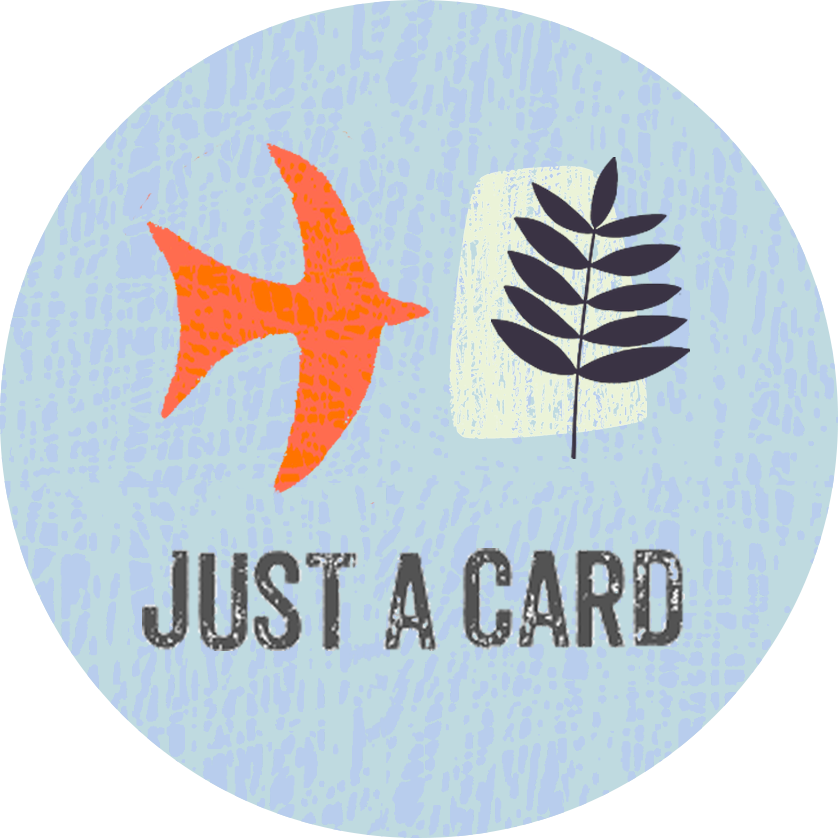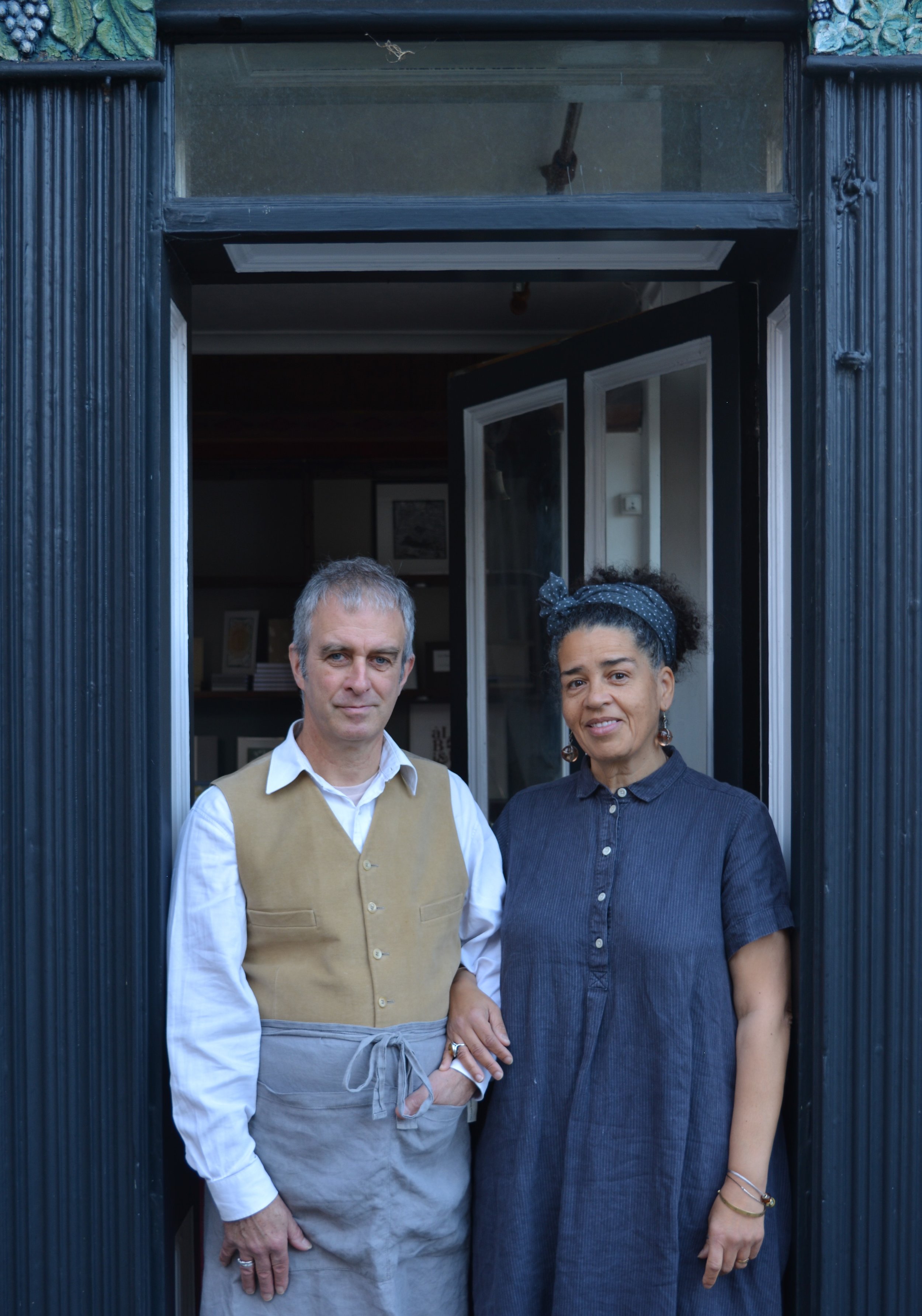Ink & Page
By Kate Marsden
We’re off to a magical Harry Potter-esque wonderland of a shop this week. In the market town of Bridport in Dorset sits the beautiful makers’ shop and bindery Ink & Page, the contents of which are almost overwhelmingly beautiful. I’m chatting to co-owner Kim Squirrel about the challenges of self-promotion and getting used to the 9-5, oh and the importance of a good night’s sleep!
Tell us a little about you. What do you do?
I'm a poet and an artist and my husband David, is a bookbinder and a musician. We met as studio neighbours in a boatyard on Exeter's ship canal. I had a small gallery next to my studio and when we got together we planned to combine gallery, bindery and studio together as one business, but fate stepped in and we had to move out. Twenty two years, two children and one orchard conservation project later, we have finally got here. We went into partnership as makers and tutors in 2010, and eight years later established a makers shop in our home town of Bridport. We showcase local artists and makers and continue making and teaching ourselves.
What does a typical day involve?
We take turns to open up the shop so we each have an hour or two midweek to run errands, catch up on paperwork, or sit with a cuppa and daydream. It’s a five-minute walk to the shop.
Once lights are on, the till is set up, I do a little tour of our tiny kingdom to see if there is anything looking tired or out of place. The fresh eyes you come with in the morning are invaluable for making decisions. So changes in the displays are made early in the day rather than last thing, apart from restocking when things sell, which needs to happen immediately as most things we sell are part of a very small run or made to order. David will be at the print studio, which is another five minute walk away or bookbinding upstairs. I can call up the spiral staircase and ask him to make another book or an origami flower or two if I get an idea for the window. I’m not allowed too much of that though, shopkeeping is a serious business and he has to get on with making books for us to sell! Still if we didn’t make time to be creative and spontaneous I don’t think we could tolerate the restrictions there are with a shop. The 9-5 life is new to us!
In addition to this, I spend time contacting makers with orders, taking delivery and letting customers know they are ready to collect. Packaging cards or prints for display, pricing new stock. Sending off books or cards bought online. Meeting greeting and chatting with customers, making sales (which is always good!) And planning... lots of planning and visualising whatever is coming next!
We have lunch together upstairs in the bindery and we’re home before five thirty to garden, play music, cook and catch up with our two children, now 17 and 23. Sometimes I have to dash up to the shops or occasionally I’ll stay late and work on something, I have an easel in the corner of the shop and a little writing desk.
Where do you work? What is your shop like? What do you enjoy doing when you're not working?
Our shop looks like one of those little places in Burlington arcade in London. It is quite ornate with carved corbells and ironwork window frames with stained glass and it's elegant spiral staircase makes it particularly distinctive. We’ve put an antique bell on the door that rings when it opens so we can be upstairs working on quiet days. It was built onto a Georgian house in 1845 and made for a tailor. Later, in the 1960’s, it was home to a puppet maker who sold art materials and mended toys so it has a history as a maker’s shop.
When we aren’t working David loves to sail, we garden and walk and go to the beach out of season. David plays in a duo and quartet and I read poetry, we recently performed poetry and mandolin together. At the moment we are inundated with tasks so we only manage to snatch one day of leisure a week... hoping that will change soon, the garden is calling!
What do you consider to be the main challenges facing shop/gallery owners at the moment?
I think the biggest challenge for us is to get our message out. Shopping locally, choosing ethically made and handcrafted goods are incredibly powerful ways to be sustainable, support local economies and enrich our own lives. But we live in such an information saturated world it's difficult to find a way to be heard. How do we tell our story? We favour a return to hard copy and love the idea of using our letterpress machine to create beautiful flyers and posters. At the moment we are keen on social media to get our message across too, but I think it's difficult to keep pace with the rapid changes we have in modern communication and media.
Things move so quickly and our business is about taking your time, so we are at odds in many ways with the mainstream way of doing things. I think we have to stand our ground but it can be isolating and dispiriting. We need support and that's likely to only come from people who really understand what's involved. When we all have so much that needs our attention how do we find time to offer help or seek that support? How might we pool our resources is a question I'm always asking. There must be a way to make things easier.
What ambitions do you have for your business over the next few years?
We want to continue to be distinctive and gain a reputation for excellence and integrity. We are wedded to truly handcrafted work and want to carry that through to all aspects of the business. We are researching ways to be free of plastics… the problem of finding a bag to carry a lampshade through the rain has to have a non-plastic solution!
We are adding new makers and planning to tell their stories in our shop window and on our website. We want to continue to source locally and are confident there are lots of incredible people out there we can bring to a wider audience. In a year or two we hope to have a large cast and crew to choose from. The great thing about working with creatives is that they don’t churn out exactly the same thing over and over again. Their work evolves, they can be limited by their process, failures and accidents are part of creativity, and new things can arrive out of that, so we can’t always predict what will arrive in our shop. The shop will organically grow into its own seasonality and that’s exciting. We want to have a considerable following, regular customers and a program of outreach with our workshops in bookbinding, printing and ‘keeping a notebook’. We’d want to be on our way to including other makers in the running of the shop as well.
Do you have any tips for fellow small business owners and designer/makers who are reading this and may be just starting out?
· Be a glass half full person and be prepared to adapt and change when you’re let down or thwarted. If you keep going it can sometimes lead to something even better than whatever you’d planned.
· Be ready for the ‘quiet times’ and work out how you can use them to your advantage. Don’t panic!
· Get other people who are capable to do the things you struggle with. Barter, beg, find the money to pay them. It will be worth it. On the other hand, don’t give away the fun jobs… make sure you do lots of the things you love! Savour those warm fuzzy moments.
· Tomorrow is another day. Really it is… close the shop, go home and get a good night’s sleep.
· Talking is great, doing is better! No matter how much you talk about it you can’t really know until you start, so use your time wisely, and don’t be afraid to try things out.
Had you realised the Just A Card campaign message suggests cards as an example of a small purchase - we're about encouraging all sales as they keep businesses afloat?
It took me a while to get that it was about all independent businesses. I was hooked on it literally being about buying a card, so only applied to shops selling them. I loved Sarah Cowan’s poster on Instagram with the different versions of the logo that made it very clear.
How important is the Just A Card campaign message to you and your business?
It’s so good to have a simple message to share and lots of visitors come in looking for that little thing to buy and demonstrate their support. I love that there’s a community out there to share your experiences with, it can be a lonely business.
Where did you hear about the campaign and which Social Media platforms do you use most frequently?
I saw Just A Card around in a few places until I properly read the sticker in Collate Interiors in Axminster. I use Instagram mainly, I like that it’s visually led.
What do you think people can do to support Just A Card, and how will you be doing so?
I am talking to people in our town, telling them how to join. It’s important to explain that all small businesses are included and that it’s a principle to be applied and adhered to. It’s good to talk about how buying local helps the local economy and maintains local distinctiveness. I like that we are called Just A Card warriors, as it is about being armed with information and brave enough to start those conversations.
I’ve come across people who are disillusioned, tired and stressed with trying to get on and it’s been good to have something to tell them that could help turn things around. We are going to start a local shopping campaign in our town. We’ve talked to the council, to our neighbours and friends and chatted in the shops we regularly visit. I don’t think I’d be attempting it if I hadn’t been impressed by what the Just A Card campaign has already achieved and its potential to bring change.







